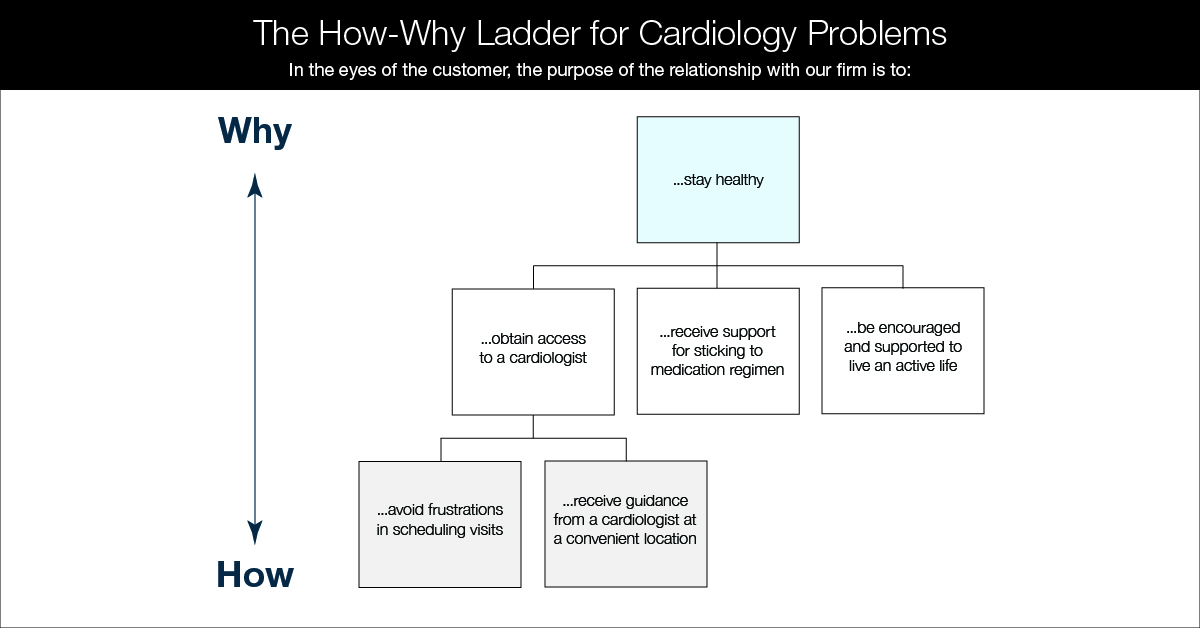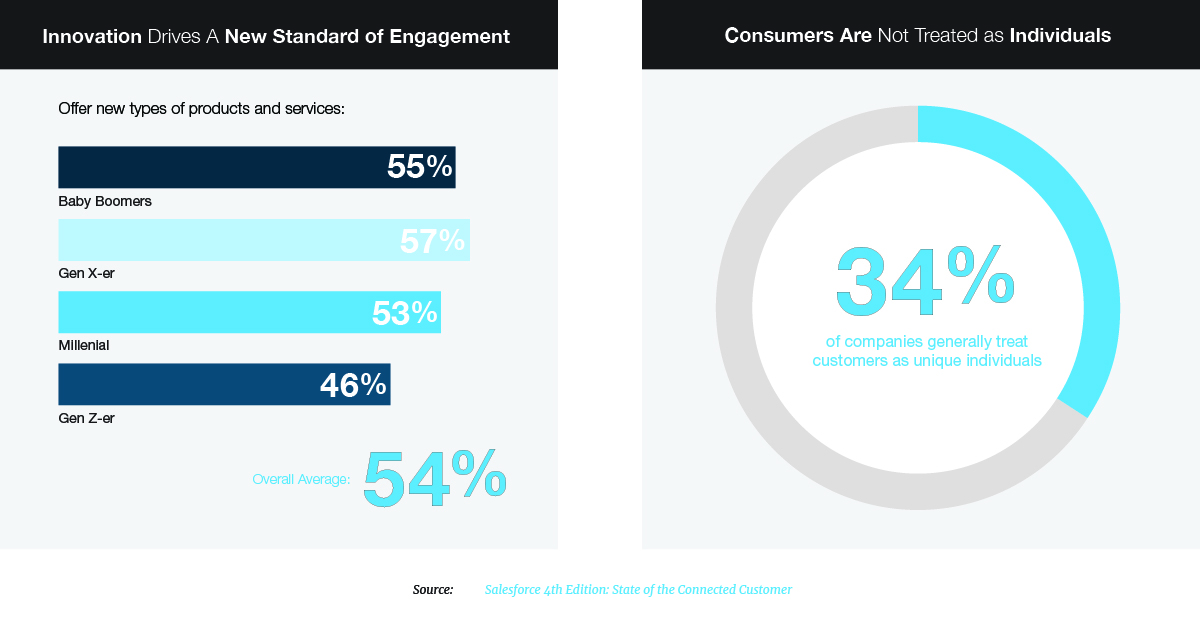The Why-How Ladder
Recognizing Deeper Needs
In Wharton School Professors Nicolaj Siggelkow and Christian Terwiesch’s recent book, Connected Strategy, they introduce the “Why-How Model.” Siggelkow and Terwiesch say that as companies learn more about their customers, they have an opportunity to move from addressing basic needs to more fundamental ones.
For example, a basic need is learning about compound interest rates, and a fundamental need is about ascertaining the value of an investment or planning for retirement. In the field of healthcare, if a patient is feeling heart palpitations, the narrow need is to talk to a cardiologist, the broader need is to stay healthy.

A recent clinical study conducted by the University of Pennsylvania on cardiac health found that patients discharged after being treated for a major cardiac incident did not stay on their medication longer than six months. If a healthcare professional could track the pill bottles those patients took, they could remind patients to take them. The why is staying healthy. The how is monitoring the actual usage of the prescribed medications.

Connected Experiences are Thoughtful
It’s no longer good enough for a company to sell a product through a simple, one-time transaction. Waiting for a customer to come in with a particular need, and then “buy what’s available” is not a relationship. That’s like a friend that calls only when they need something. Consumers want to be treated as individuals. Digital connectedness, like social connections, requires an understanding of the situation, empathy for the person and the ability to respond thoughtfully.

Successful relationships continuously listen, learn and evolve, and provide a valuable exchange of personalized experiences. To design the most useful, usable, innovative, and memorable experiences, you can start by:
- Defining the way people will interact
- Identifying gaps, overlaps, and opportunities for an ideal experience
- Understanding barriers to adoption
- Building interactions that will draw and engage a full range of possible experiences

Connected Strategies Are About People, Not Technology
At its heart, connected strategy is about business model modification and innovation. Companies are learning to interact differently — understanding when and how to employ technology to fit the needs and desires of the situation. When done correctly, a customer’s willingness-to-pay and purchase frequency increases based on the perceived value of the service.
There is no doubt that connectivity will always have some form of technological enabler. Connected experiences will continue because customers are demanding them. The key to their success lies in understanding the forms those experiences take and your ability to fulfill those needs like no other brand can.
Understanding the why and the how are a vital part of connected experience strategies.
How we communicate and expect service experiences is evolving. Connected strategies change based on consumer needs and desires. To learn more, download Valtech’s latest whitepaper: Connectedness: Jump starting your connected experience strategy.








